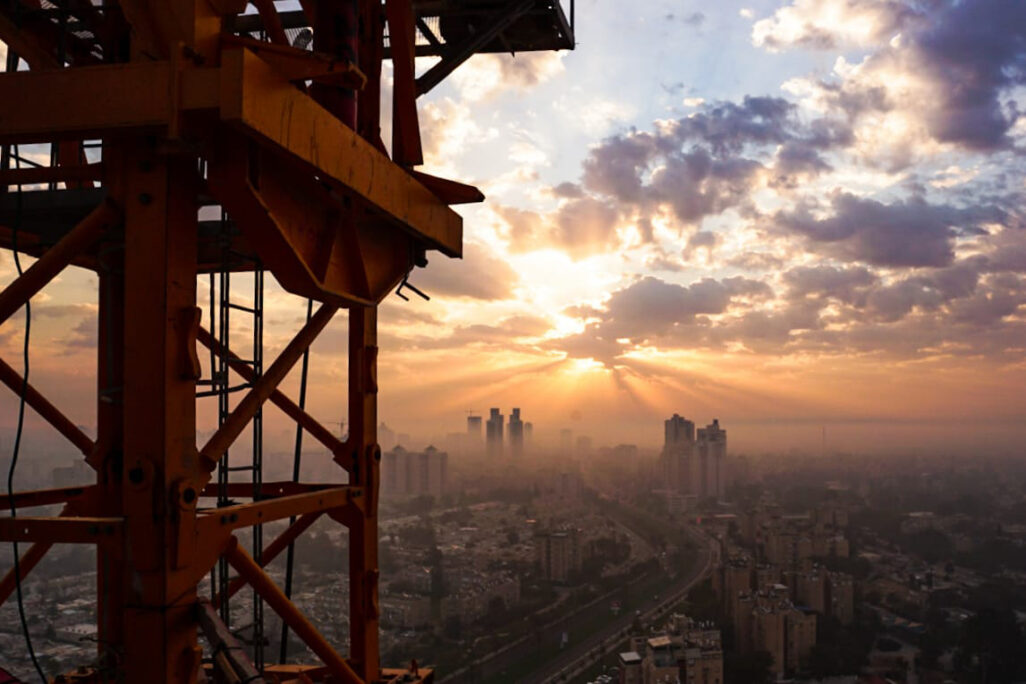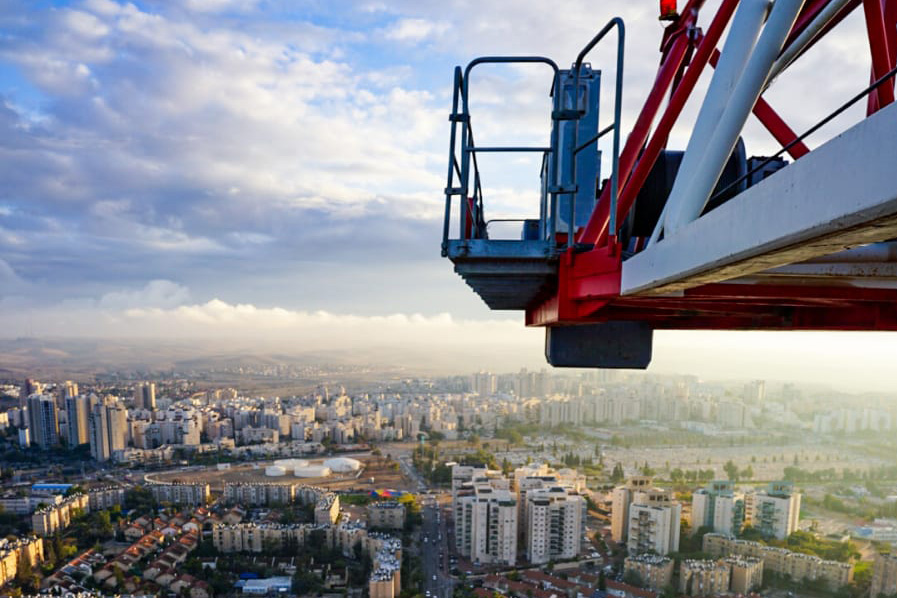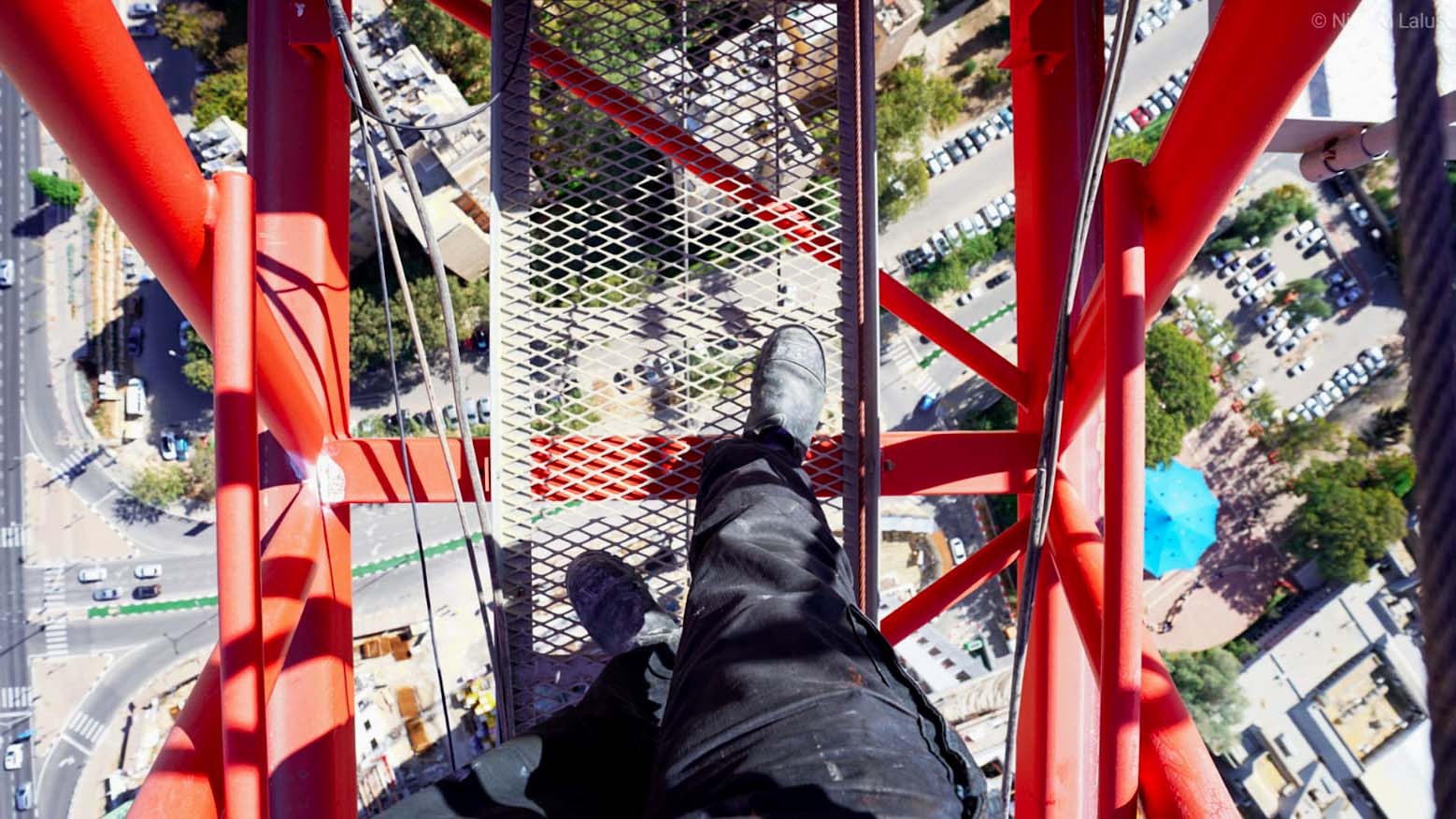
These are some basic things to grasp: The crane operator works in solitude. Sits in a small cabin, hoisted 50-100 meters above the ground, for upwards of 12 hours. Their only link to the outside world, splayed out beneath them, is their signaler (whose job it is to direct the crane from the ground), or their manager. Wanna get down? It’s a complicated matter, that could take 20 minutes or more. And if the construction site is running a second crane, the operator of the first crane doesn’t necessarily know the first thing about his colleague.
“We’re not in the kind of business where people get to know each other all the time,” says Dan Varshavsky, head of the national committee of crane workers, “crane workers work alone.” In 2015, Varshavsky, a crane operator himself, joined a group of people which led the struggle to organize the major crane companies, seeking to bring order to an industry riddled with problems. But how do you organize people who work alone?

Workplace deaths are on the rise in Israel, with 91 workers losing their lives in workplace accidents in 2019 – the worst year in a decade. Over the past two years, the rate of deaths in work-related accidents has risen by over 50 percent. While this phenomenon exists in many sectors of the Israeli workforce, the worst numbers are among construction workers – who are 6.6 times more likely to die at work than anyone else. One reason for this is the inherent dangers associated with working from great heights, often with powerful machinery, but another reason is far more sinister: the clear lack of adequate safety regulations and working conditions for construction workers, without which thousands of workers risk their lives on a daily basis.
Workers of one often-overlooked arm of the construction industry – the crane industry – have a particularly unique story to tell about their road to unionization, and proper representation in their struggle for better conditions.
A union via WhatsApp
“It’s hard to imagine getting this union going without social media, especially without WhatsApp, says Varshavsky, whose phone dings incessantly with notifications from various crane-worker WhatsApp groups. “By the end of the day, I might have thousands of messages,” he grins. “It also helps with the loneliness. You’re up there, alone in your cabin, and people start chatting. It might start with a story from your crane, but pretty quickly you get to finding out how many kids everyone has to come home to. That’s what builds the group.”
A glance at one of the WhatsApp groups he is in reveals incredible landscape photography, taken from the heights of a crane-cabin. It’s a different perspective. Crane operators are used to seeing everything from above.

Digital Signatures, No Paperwork
Varshavsky’s committee is rather unique within the world of organized labor, tailored to the particular conditions in which crane operators work. Since these workers regularly move between construction sites and contractors every few months, their union is nation-wide. Negotiations are had with the Israel Builders Association, the official representative body of the sectors’ employers, and a large part of the committee’s work is dedicated to the implementation of safety standards across the whole industry. The committee also struggles against the phenomenon of unlicensed workers, and instances of violence against crane workers at the hands of construction site managers.

“We started organizing in 2018, a month or so before the Katy Karkolov story broke, the female crane operator who was fired in Ashkelon for refusing to climb a crane during a storm with high winds,” he says. Public discourse surrounding safety problems in the construction industry was at that point non-existent, and according to Varshavsky and his colleagues, workplace safety was the main issue that drove them to organize and fight for improved conditions.
“The goal was to get around 400 crane workers to join the Histadrut, in order to build a firm base from which we could negotiate,” he recalls. “In the beginning, we were running around with forms, between construction sites, and signing people on – one by one. If we would have kept that up, even by today we wouldn’t have reached our goal. But fate smiled on us, and we were authorized to use the Histadrut’s digital sign-up system, which they recently developed with the Pelephone [a large mobile network operator] workers’ union. We could sign people up through a website, with an authorization code sent to a cellphone. From the moment we got access to it, it only took a few short months to reach our target. The combination of digital sign-ups and WhatsApp changed what seemed to us as impossible, to possible.”

Voice notes at the Tower of Babel
Unlike many other workers’ associations, where Facebook plays a central role, for crane workers, WhatsApp was the key. Its adoption facilitated the successful bridging of significant cultural and language gaps. Half of all crane workers are olim [immigrants] from former Soviet states, a quarter are Arab-Israelis, and a quarter are Israeli-born Jews. Voice notes, which WhatsApp supports, aided greatly in overcoming the obstacles of written communication.
“Today, the committee runs simultaneous groups in Hebrew, Arabic and Russian; regional groups for crane workers in the South, and for those in the North; as well as additional groups for each company within which the workers are currently employed.”
According to Varshavsky, the groups allow for two-way communication between those working on-site and committee members, to discuss issues, and express their needs in real time. Issues such as high wind conditions, safety defects and other matters for which the committee provides support have sparked discussion in the groups. Accordingly, these issues eventually reached collective negotiations and the public agenda. The struggle for the installation of panic buttons in cabins, for instance, was “a need that arose,” he says, “after one of our members wrote in the group about the distress caused by feeling unwell when isolated in the cabin.”
And there is also a downside. “Some of the crane workers left the larger groups because there are so many messages,” says Varshavsky. “I also opened quieter groups, where only admins can post. But despite the heavy traffic,” he adds, “the open groups actually play an important role. WhatsApp allows us to maintain constant communication while at work. And for the head of a nation-wide committee, it’s an incredible tool.”






